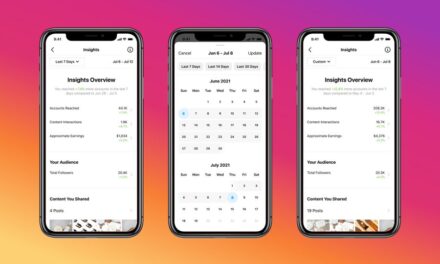New technologies are opening the door to new tools that will transform the way digital marketers build strategies and create their web pages. Choosing which new tactics to integrate can be confusing and overwhelming.
Here are five digital marketing predictions for 2019 to help you create smarter campaigns:
1. Customer UX
The profusion of data available from pixel tracking, chatbots, and customer profiles gives us the ability to deliver personalized, highly-relevant messaging. Customers have come to expect a seamless omnichannel experience, and marketers need to be ready to deliver. Understanding that the customer journey is neither linear nor predictable, marketers must find ways to accurately provide insight at pivotal moments in the customer experience journey that leads them to purchase. Rather than channel experts, marketers must become customer experience experts, which are focused on acquisition, retention, and loyalty.
Read More: Six Skills Every Digital Marketing Team Needs for 2019
2. Quality of Page Views over Quantity
Sophisticated web analytics tools that reveal a visitor’s online behavior will take precedence over page views as marketers elevate “time on site” as a critical quality metric. The number of page views has long been the standard way marketers measure online performance. While those metrics are still important, marketers are beginning to gravitate toward more valuable metrics so that they can gauge whether or not they are capturing their customers’ attention. Marketers will want to measure average time spent, average scroll depth, bounce rate and time between visits.
Earning a customer’s time means that you must work hard to inspire, educate, and entertain them. Lengthening the time audiences spend on your site contributes positively to the customer’s overall satisfaction with your brand. Increasing quality means marketers must work harder and become more sophisticated in creating experiences that lead audiences to stay. Key elements include consistently updating with fresh content, providing relevant internal links, fast loading times, intuitive organization and beautiful design.
3. Voice over Text
Gartner predicts that “30 percent of web browsing sessions will be done without a screen.” Our comfort with OK Google, Amazon’s Alexa, Apple’s Siri, speech-to-text technology and Internet of Things (IoT) devices, are driving us to use hands and eyes-free dialogue-based information platforms. Marketers should ensure their web pages can be found quickly by virtual assistants with words that succinctly answer questions in a conversational tone. This will require some forethought on the marketer’s part to think about how a search query is made. When searchers articulate a query, rather than type, they are likely to use more words and longer search strings. Marketers can begin to see how their existing content will be found and to listen to how their content sounds when it is read back by a virtual assistant. The key is to focus on natural language conversations that give searchers the precise answers they need.
Read More: 4 Tips for Keeping Up With New Digital Marketing Trends
4. Video Engagement
Consumers love video, as evidenced by YouTube quickly becoming the most visited internet site, second to Google. As a way to show, and not just tell, brands can convey far more information about their products with video. At the same time, video provides a way to boost engagement with personalized customer chats, including answering questions, thanking them and providing tailored product recommendations. Mobile devices have made creating video much more accessible and cost-effective, and the advent of streaming services, including Twitch, open the door for Influencer Marketing opportunities. AI‘s ability to transcribe audio makes video searchable and can be combined with valuable user metrics to show how specific videos are performing.
5. Pictures vs. Keywords
While still in its infancy, visual search technology will continue its expansion into websites and will dramatically transform search engine marketing. Far different than image search, visual search uses an image as the query, rather than text. Buyers can use their mobile device’s camera, or a photo, to search for a product and then click to buy. The applications for a search engine that provides results, or products, based on our surroundings will impact travel, clothing, furniture, home improvement and virtually every part of our lives. New tools in machine learning are improving the ability to process images and the elements within the image quickly. Metadata is especially crucial for visual search to help search engines find the images. Tagging specific images will be a tedious, but essential job, if brands want to rank high in search results.














